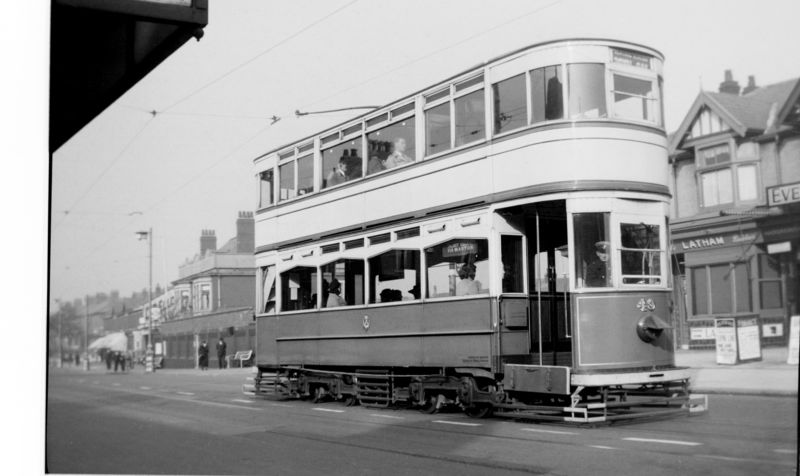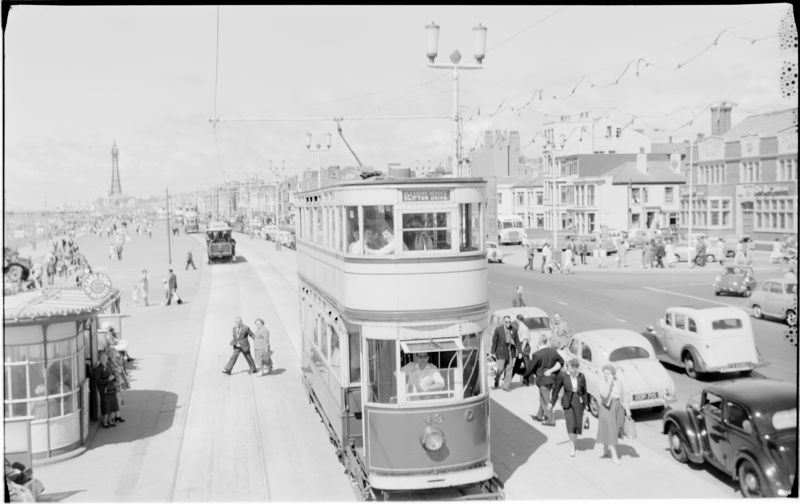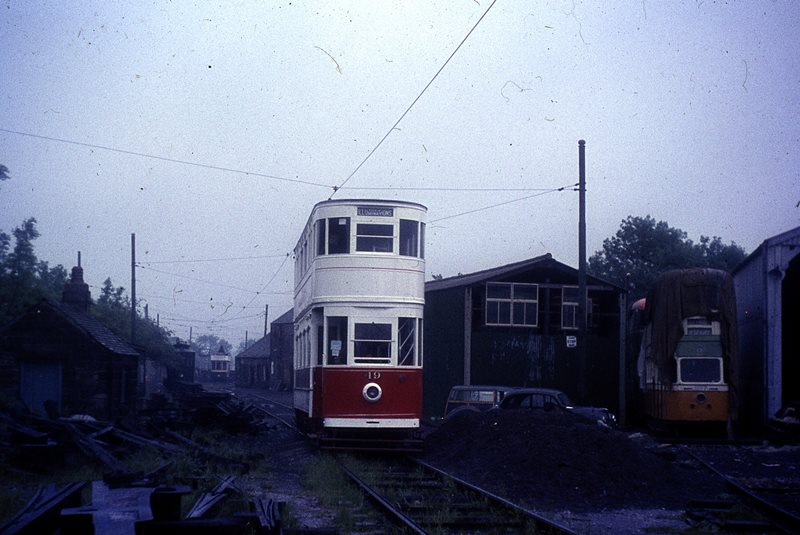Blackpool Corporation No. 49
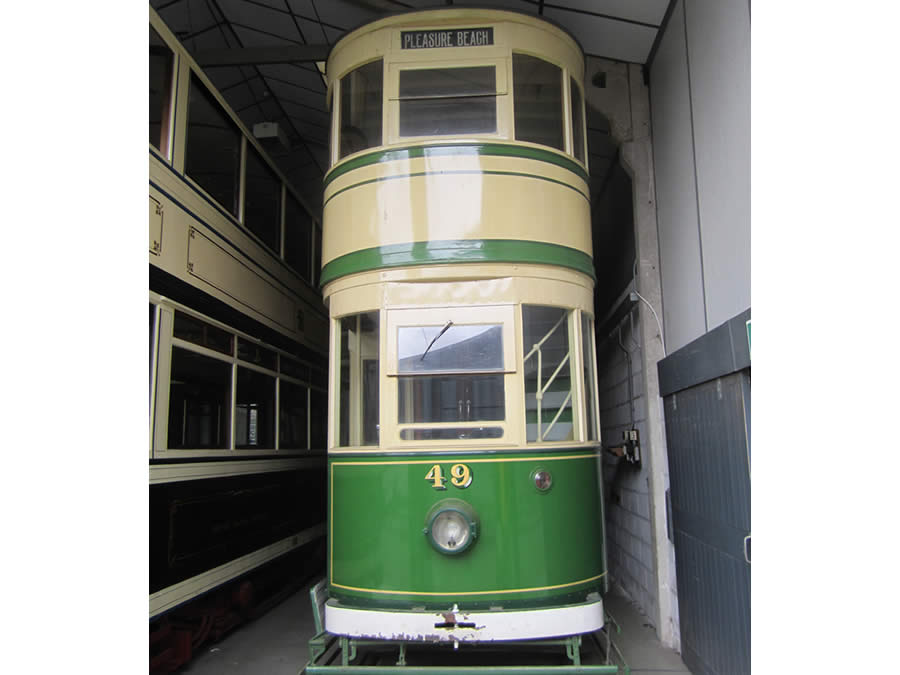
Photo: Jim Dignan
Like its open-balconied stable-mate, Blackpool 40 (also in the collection), number 49 was one of a number of Standard tramcars that augmented the fleet in the early years after Blackpool Corporation Tramway acquired its northern neighbour, the Blackpool and Fleetwood Tramroad in 1920.
Since this was a period of acute financial austerity it was extremely difficult for tramway managers, such as Blackpool’s Mr. Furness, to obtain the capital investment required for more than a handful of new tramcars. The only way of obtaining the additional vehicles that were needed was to engage in a form of ‘creative accountancy’ whereby virtually new trams that were built by the tramway’s own workshops could be designated as ‘rebuilds’ or ‘modernised’ tramcars, the expenditure of which could be drawn from revenue funding instead.
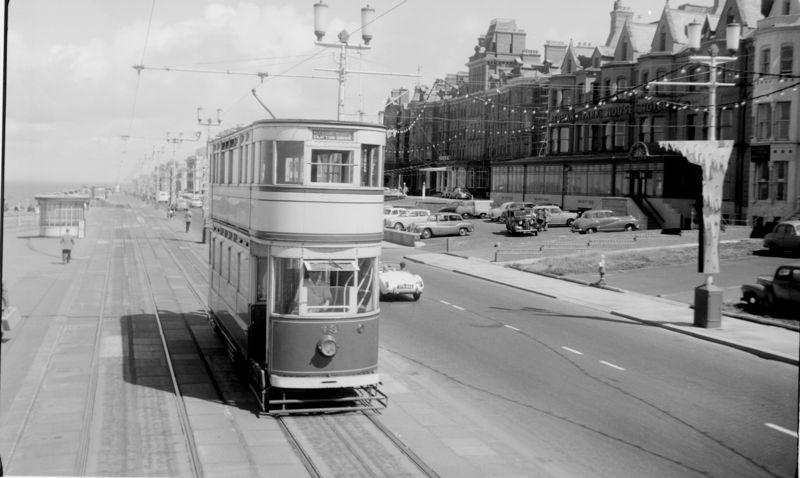
49 on the North Promenade by the Imperial Hydro. M.J. O’Connor, 9/7/1960
For book-keeping purposes, Blackpool 49 was described as a ‘rebuild’ of an earlier tramcar (built by Hurst Nelson, of Motherwell) that dated back to 1902 but in reality the tram inherited very few components from its predecessor apart from a 1912-pattern short top-cover dating back to just before the first world war. The tramcar received a balcony top cover in the late 1920s and the vestibules and balconies themselves were enclosed a few years later in 1930/1. The current green and cream livery also dates back to around this time whereas the red white and teak livery seen on Blackpool 40 depicts the previous livery.
Specification
- Type of tram
- Double deck bogie tramcar with enclosed vestibules and balconies.
- Livery
- Green and cream (originally red and white)
- Seating capacity
- 78 (46 wooden seats on the upper deck; 32 seats in the lower saloon)
- Date built
- 1926
- Manufacturer of body
- Blackpool Corporation.
- Manufacturer of truck
- Preston McGuire equal wheel bogies
- Gauge
- 4’ 8½”
- Motor
- 2x BTH B265C (35 hp)
- Controller
- BTH B510A
- Current collector
- Trolley
- Modification
As a technically ‘rebuilt’ tramcar, its predecessor was originally built as an open-topped tramcar without vestibules or canopies, but received a short top cover just before the first world war.
A very substantial “rebuild” in 1924/6 resulted in a virtually new tramcar, with new lower deck and platforms, motors and bogies.
In the late 1920s it received a balcony top-cover and the current more modern controllers replaced the originals (B.T.H. B18). Its vestibules and balconies were enclosed shortly afterwards in 1930/1.
April 1933 repainted in current green and cream livery.
April 1937 wooden seating was replaced by upholstered seats.
March 1938 top deck vestibules fitted.
February 1943 major body repairs at No. 2 end following an accident; re-trucked and re-motored.- Withdrawn from service
1962
- Subsequent history
Taken to Crich for preservation in December 1962. 1964 entered service at Crich in 1920’s red livery.
May 1973 Disguised as Manchester 327 for the filming of Howard Spring’s ‘Shabby Tiger’ (appearing with Johannesburg 60, which masqueraded as Manchester 717).- Restoration history
Taken to Crich for preservation in December 1962. 1964 entered service at Crich in 1920’s red livery.
- Current status
- Conserved; on display
- Date started operating at Crich
- 1964. Has operated in 27 seasons, most recently in 1992.
- Total mileage covered at Crich
- 17,831
- Current location
- Depots
- 1926 – 1962Operational on original tramway
- 1962 – 1964Undergoing restoration
- 1964 – 1976Operational at Crich
- 1976 – 1978Undergoing restoration
- 1978 – 1992Operational at Crich
- 1992 –On display

